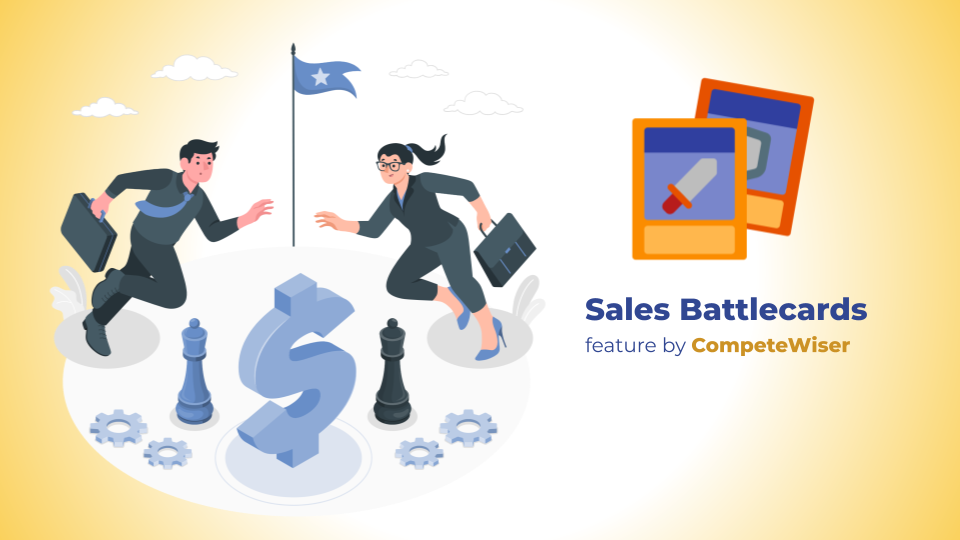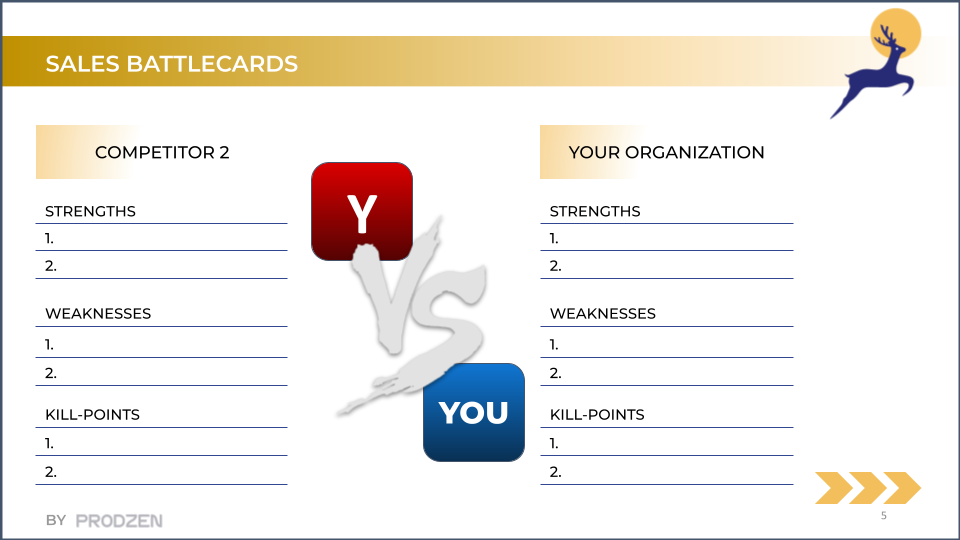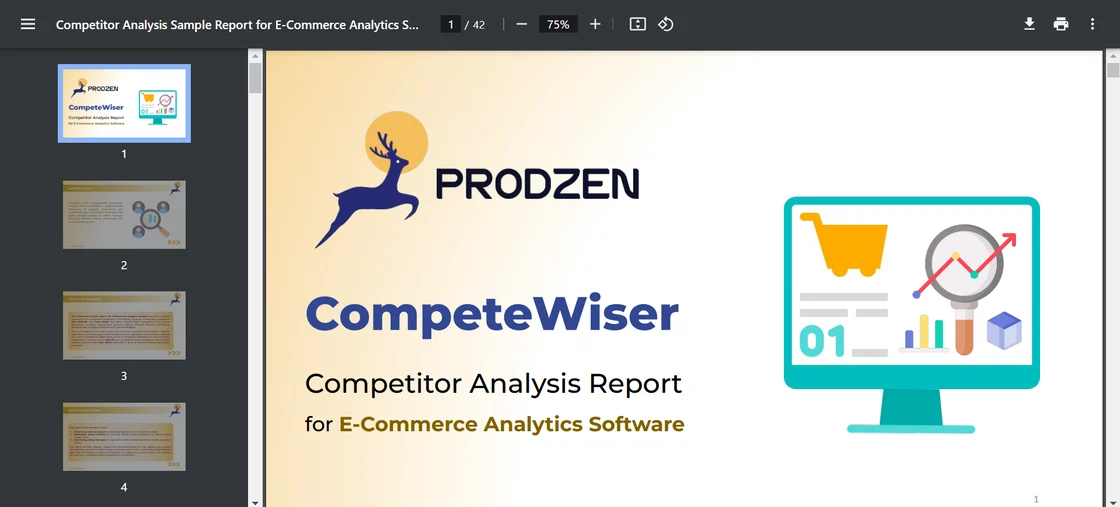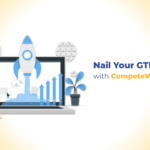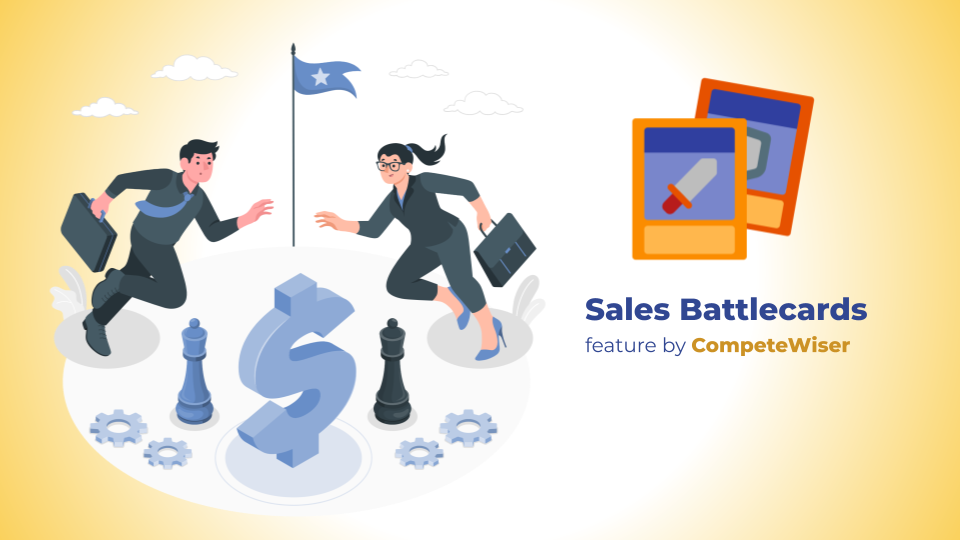
Unlock More Wins: How to Get Your Sales Team Hooked on Battlecards
- Milind Soni
- September 24, 2024
- Blog
- #battlecards, #competewiser, #sales, #salesbattlecards, #salesenablement
- 0 Comments
Imagine sending your sales reps into a competitive sales situation without the right tools—it’s like sending a soldier into battle without armor. Sales battlecards are your team’s essential armor. These compact, powerful cheat sheets are designed to provide instant, real-time insights into your competitors. They can make the difference between a lost deal and a victory.
But here’s the real challenge: ensuring your team consistently uses battlecards to their full potential. These one-pagers give your reps the knowledge they need at their fingertips—competitor weaknesses, pricing strategies, objection-handling tactics—allowing them to navigate sales conversations with confidence.
Now, picture walking into a competitive sales call and having all the answers ready. That’s exactly what battlecards do. They simplify the complex and give your reps the power to respond in real-time, turning tricky situations into closed deals. The key? Making sure your team adopts them as their go-to resource. Here’s how you can turn battlecards into your sales team’s most trusted ally.
1. Educate Your Sales Team on What a Sales Battlecard Is and Why It’s Essential
Before your sales reps can leverage battlecards, they need to understand what a sales battlecard is and why it’s crucial to their success. A sales battlecard is more than just a competitive overview—it’s a tactical document that provides quick, actionable insights into how your product compares to competitors. Reps can use it to handle objections, showcase unique value propositions, and outmaneuver competitors during sales calls.
Key Benefits:
- Faster response to objections: Reps can handle challenges by instantly pulling up competitor weaknesses and countering them with your product’s strengths.
- Better pricing comparisons: With competitor pricing data in hand, reps can justify your product’s price or offer compelling discounts.
- Tailored messaging: By using a battlecard, sales reps can adjust their pitch depending on the competitive landscape.
2. Use a Structured Template for Sales Battlecards
One of the keys to getting your sales team to use battlecards effectively is to provide a clear template for sales battlecards. A well-organized structure ensures that the information is easily accessible during fast-paced sales conversations. Here’s a standard structure of a sales battlecard:
Key Sections in a Sales Battlecard:
- Competitor Overview: A snapshot of the competitor’s product or company.
- Strengths & Weaknesses: A side-by-side comparison of how your product outperforms the competitor.
- Pricing Strategy: Details on competitor pricing, discounts, and package options.
- Objection Handling: Predefined responses to common objections related to the competitor.
- Unique Selling Proposition (USP): Highlights of what makes your product stand out in the market.
A well-designed PowerPoint sales battlecard template can also be helpful for presentations or visual learners, allowing sales reps to quickly reference key competitive insights during meetings.
3. Train Your Team Using Real-World Scenarios and Role-Playing
To drive adoption, your sales reps need to practice using battlecards in real-world scenarios. Conduct training sessions that involve role-playing competitive sales situations, where reps can practice handling objections and using the battlecards effectively.
Training Tips:
- Use mock sales calls to simulate real-world scenarios.
- Provide feedback on how well reps used the battlecards and what they can improve.
- Update your training materials regularly to reflect the latest feature updates or new product launches from competitors.
By continuously refining their approach using battlecards, sales reps will gain the confidence to handle objections effectively and close more deals.
4. Embed Battlecards into Your Sales Process and CRM
To ensure your sales team uses battlecards consistently, you need to make them easily accessible. Embed battlecards into your sales enablement tools, such as your CRM system (e.g., Salesforce, HubSpot). This way, your reps can pull up relevant battlecards with just a few clicks.
How to Implement:
- CRM Integration: Ensure that battlecards are accessible through your CRM or sales platform, allowing reps to quickly find them during sales conversations.
- Automation: Set up automated triggers to prompt battlecard suggestions when a competitor is mentioned during a call or meeting.
- Keep it Updated: As competitors introduce new product launches or feature updates, ensure that your battlecards are refreshed with this information.
5. Make Battlecards Highly Relevant with Personalization
A generic battlecard won’t resonate with your sales team. Personalize the content by tailoring it to specific industries, competitor types, or customer segments. For instance, if your competitor recently rolled out a new product launch or a significant feature update, highlight how your product continues to offer superior value.
What to Include in Personalized Battlecards:
- Industry-Specific Objections: Common objections your reps face in their specific industry.
- Competitor-Specific Pricing Information: A detailed pricing comparison for key competitors, helping reps navigate price-based objections.
- Unique Features: How your product’s features stack up against recent feature updates from competitors.
This level of personalization makes the battlecard feel more relevant, increasing the likelihood that sales reps will use it.
6. Continuously Update Battlecards with Competitive Intelligence
Competitors don’t stand still, and neither should your battlecards. Regularly update your battlecards with fresh data, such as pricing changes, social discovery (feedback from customers on social media), or new competitor strategies. Tools like CompeteWiser can help automate this process by tracking real-time competitor activities and ensuring your battlecards are always up-to-date.
Best Practices for Updating Battlecards:
- Monthly Reviews: Schedule regular reviews to incorporate the latest competitor pricing changes and new feature rollouts.
- Feedback Loop: Ask your sales reps for feedback on the usefulness of battlecards and update them based on their input.
By keeping your battlecards current, you’ll ensure that they remain a valuable resource for your sales team.
7. Recognize Success and Reward Usage
Recognizing when a sales rep successfully uses a battlecard to win a deal helps drive long-term adoption. Highlight these wins in team meetings, internal newsletters, or even through formal recognition programs. When reps see that their peers are succeeding by using battlecards, they’ll be more motivated to use them consistently.
Conclusion: Empower Your Sales Team with Battlecards to Win More Deals
Incorporating sales battlecards into your team’s process is not just about providing a resource—it’s about empowering your reps with the competitive intelligence they need to win more deals. With structured templates, regular updates, and personalized content, your sales team will have all the tools necessary to outperform competitors.
Want to help your sales team close more deals? Request a PowerPoint sales battlecard template or schedule a demo with CompeteWiser today to see how competitive insights can transform your sales strategy!

